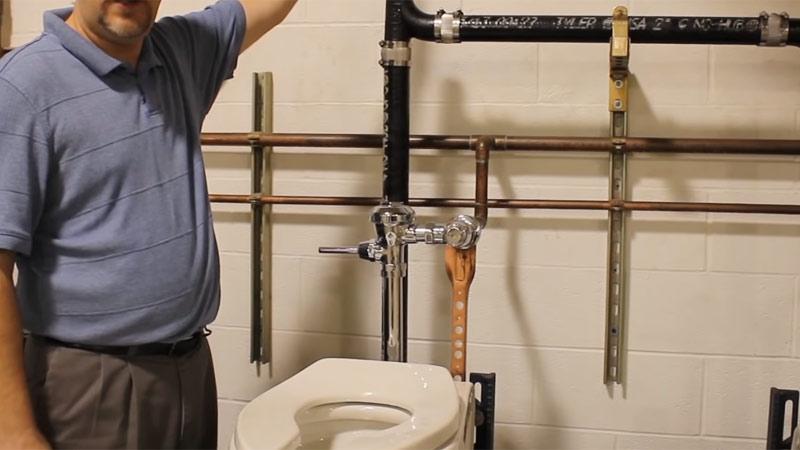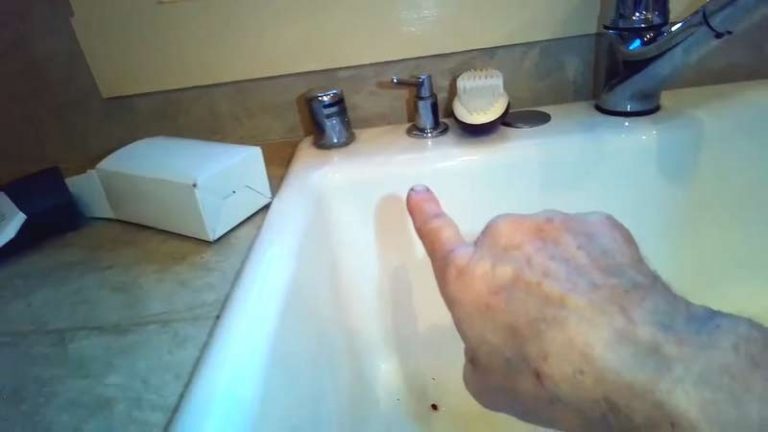How Do You Identify A Vent Stack

If you notice a vent pipe in your attic, it’s important to identify it as such. Once you’ve identified the vent pipe, it’s time to inspect for signs of abnormal activity or electrical cables running into the system from below.
Remove all obstructions in the path of the vent pipe so that air can flow freely and heat will be properly dissipated. Lastly, check to see if there are any other issues with your attic ventilation like water leaks or improper insulation levels
You'll Learn About
How Do You Identify A Vent Stack?
If you find a vent pipe in your attic, identify it as such by its shape and size. Inspect the area around the pipe for signs of abnormal activity, such as strange sounds or movement.
Check to see if there are any cables running into it from below. This can indicate that the object is not actually a vent pipe at all but rather something more sinister. Remove all obstructions in the path of the pipe so that it can be properly inspected and cleared without risk of damage or injury to yourself or others nearby.
Remember: never try to clear a vent pipe on your own – call an expert.
Vent Pipe Found in Attic
Vent stacks are often found in attics and can be very dangerous if not identified and repaired quickly. They can cause major structural damage to your home, so it is important to identify them as soon as possible.
A vent stack will have a series of round or oval openings that allow air into the attic space. If you find a vent stack, it is important to contact an expert who can properly assess and repair the issue without causing further damage to your home.
You should also keep in mind that untreated vents in an attic can become clogged over time, leading to serious problems such as carbon monoxide poisoning
Identify It As A Vent Pipe
Vent stack appearance can vary, but many have a triangular shape with protruding wires on the top. They’re often easy to identify if you know what to look for – they typically have a black or brown coating that may be peeling or flaking off in some areas.
The vent pipe should always be attached to the roof and extended downwards at least 6 inches from any exterior wall. It’s important not to obstruct sunlight and airflow into your home when installing vents. If your property is undergoing reconstruction, make sure you contact an experienced contractor who will be able to properly identify and install vents during construction work.
Improper installation could lead to potential health hazards inside your home. Finally, if you find yourself having trouble identifying a vent stack, don’t hesitate to reach out for help – professional inspectors are available throughout most areas of the country 24/7.
Inspect For Signs of Abnormal Activity
If you are noticing unusual or abnormal noises coming from your attic, it is important to inspect for signs of activity such as wires sticking out of the vents, water logging, or damage.
A vent stack should have at least six airtight screws per square inch to ensure proper ventilation and prevent moisture build-up. Checking for loose insulation, missing screws, and warped panels can help determine if there is an issue with the vent system itself.
Inspecting smoke detectors, light fixtures, and other electrical equipment in close proximity may also be necessary in order to identify any abnormalities that could indicate a problem with the wiring within your home’s structure. Taking these steps will help you detect potential problems early on so that they can be addressed before they become bigger headaches down the line.
Cables Running Into The pipe From Below
A vent stack is a pipe that runs from the ground up into the roof and allows air to escape. To identify if there are any cables running into the pipe, look for wires or anything sticking out of it.
If you need to replace the vent stack, be sure to call a professional for help – it’s not an easy task. Vent stacks can also become clogged over time with leaves and other debris. This will cause inadequate airflow in your home.
Keeping your vents clean is essential to keeping your home healthy and comfortable
Remove All Obstructions In Path Of the pipe
Look for obstructions in the pipe’s path: If there are objects or furniture blocking the way of the stack, you’ll need to remove them before continuing.
Use a flashlight to see if water is leaking from any joints or fittings:
- Signs of leakage may include puddles on the ground
- Dripping noises
- A foul smell coming from your appliance
Listen for gaps or strange sounds emanating from your pipes: A blocked vent can cause pressure buildup inside the pipe which will produce an unusual noise – be sure to listen closely.
Feel around all nooks and crannies near where water enters and leaves your house: Pipes can sometimes be hidden behind walls, under carpets, or even in cabinets – don’t hesitate to get your hands dirty.
Don’t forget about rooflines and gables: they often contain vents that could also be blocked by debris
How do I find my vent stack?
The easiest way to check for your vent stack is to look for a vertical pipe running through the ceiling. If you find that your roof does not have a vent, then you will need to inspect the vent for defects and clean it if necessary.
You may also adjust the drainage system in order to match the ventilation needs of your home
How do you tell the difference between a drain and a vent?
To tell the difference between a drain and a vent, look for the corresponding element in each room. A toilet has a white or light-colored plastic tube running beneath the toilet seat and out of the bowl. A sink has a green, yellow, black, or blue metal pipe coming up from the floor near a drain in the wall.
The bathtubs and showers have brown, green, or purple plastic tubes with three outlets coming out of them on either side of it.
Remember that drains empty wastewater into rivers and streams while vents expel air and vaporized water from heating systems such as humidifiers or dehumidifiers. It is important to know where each element goes so you can take care of them properly.
What is the difference between a vent pipe and a vent stack?
A vent pipe is a small tube that runs through the roof of your car to let air into and out of the engine. A vent stack is a larger, more prominent pipe that sits on top of the vent pipe and directs airflow across it.
Vent Pipe Regulates Air Flow
A vent pipe is designed to regulate the airflow in your plumbing system. This type of pipe is often seen in residential applications where it’s used to control moisture levels and prevent flooding.
Vent Stack Is Used To Regulate Waste And Water Flows
Vent stacks are also known as “plumbers’ vents.” They’re typically found on homes that have been built by plumbers, and they’re used to help manage waste and water flow out of your home.
Can a vent stack terminates in attic?
A vent stack can end up terminating in your attic if it’s not installed properly. This is a hole that allows air to flow out of the house, and it can become a problem if it connects to an opening in the attic or walls.
If this happens, moisture and dust will get into the ventilation system, causing problems like mold growth and damage to insulation. If you’re working on plumbing projects, you might also want to explore whether SA water faucets are a good choice for your home. Their durability and performance can make a significant difference in your plumbing system’s efficiency.
The Vent Must Have An Air Admission Valve
Make sure the vent stack is properly installed and sealed to keep noxious gas fumes from entering the attic.
A proper installation will include having an air admission valve that allows gas fumes to escape without being trapped in the attic. This valve should be located at or near the top of the vent stack so it can be easily accessed.
Verify that there are no obstructions or gaps
Make sure all openings on your roofline are closed off with metal flashing or other suitable materials to avoid any potential problems with sewer gas infiltration into your home. You may also need a permit if you’re installing a rooftop vent system that exceeds certain environmental code restrictions (such as those set by local building codes).
Check for Environmental Codes that may prohibit this type of installation. If you live in an area where such codes exist, make sure to follow them closely when installing your vent stack – otherwise, you could face fines and/or penalties from local authorities.
Always consult a professional before making any modifications involving your home’s ventilation systems – even if they seem simple and straightforward.
Professional advice is essential when dealing with potentially dangerous gases like methane, carbon monoxide, and ammonia.
Does a vent pipe have to go through the roof?
A vent pipe must not go directly beneath an openable window or air intake. Otherwise, you may end up with mold and mildew buildup. The vent pipe should be at least 4 feet below the door, opening, or another air inlet to avoid drafts and condensation problems.
If your building has more than one level, the vent pipe should span between levels to prevent cross-contamination of pollutants between floors. Make sure that your Vent Pipe is located at a safe distance from any openings in your roof so as not to endanger yourself or others during a stormy weather event.
To Recap
A Vent Stack can be identified by the three pipes that typically protrude from it. If you see damage to or missing pieces of a vent stack, it is important to take action and have your home inspected for possible problems.
A Vent Stack should never be used without proper ventilation in place; if damaged, it can create dangerous conditions in your home.

